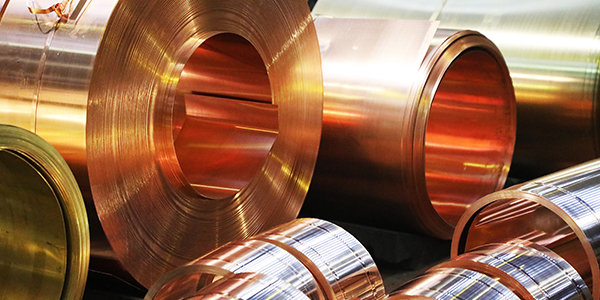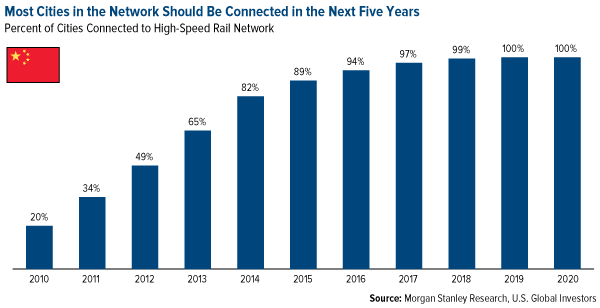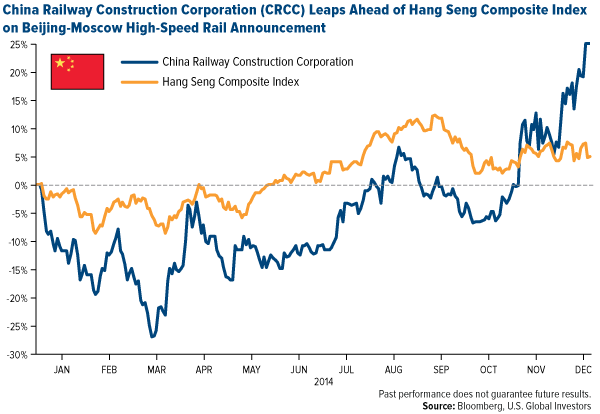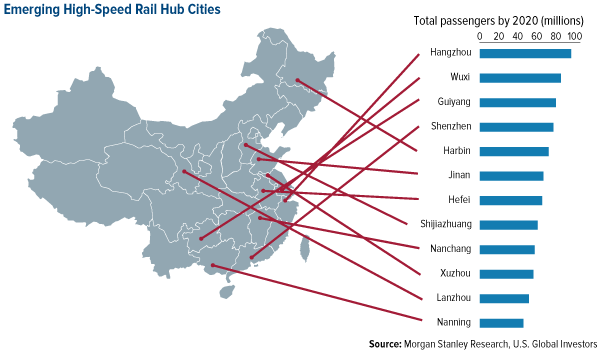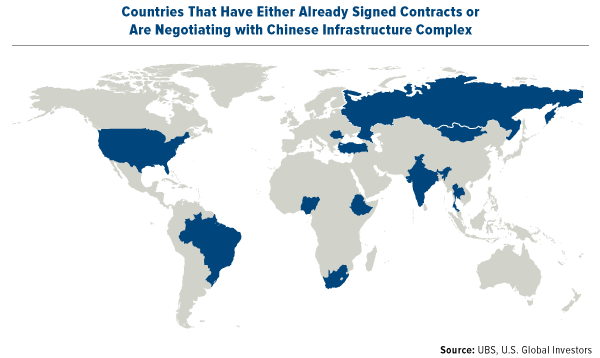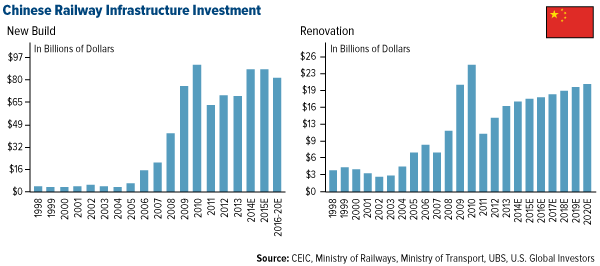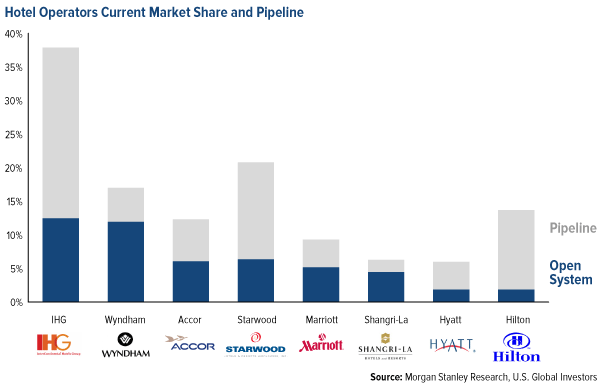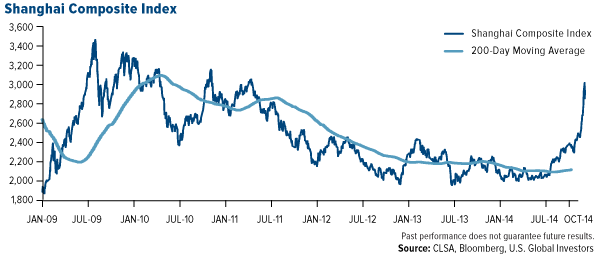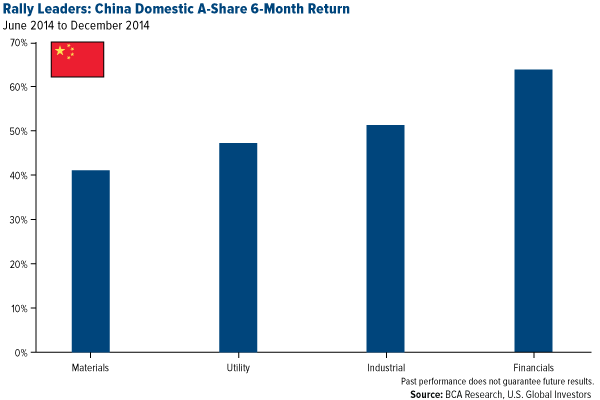
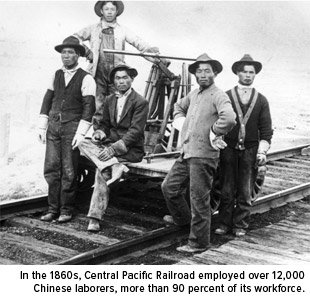
UPDATE: China Wants to Conduct the World’s High-Speed Rail Market
The construction of the American transcontinental railroad in the 1860s, which cost upwards of $136 million and covered 1,800 miles over arduous terrain, could not have been as easily accomplished without the major influx of Chinese immigrants into California. Tens of thousands of Chinese laborers worked grueling 12-hour days, six days a week, often at paltry wages and with little or no accommodations. They gained a reputation as indefatigable and resilient workers because they rarely became ill, a result of boiling their drinking water and pasteurizing their food.
 Now, close to a century and a half later, the Chinese want to return to the railroad business. This time, however, they strive to become the world’s leading go-to provider of high-speed rail and exporter of mass transit technology.
Now, close to a century and a half later, the Chinese want to return to the railroad business. This time, however, they strive to become the world’s leading go-to provider of high-speed rail and exporter of mass transit technology.
They certainly have the credentials and experience to back up their ambitions. By the end of last year alone, more than 6,800 miles of high-speed rail spanned the fourth-largest country, with another 7,500 miles currently under construction. UBS’s research reports that “China has the largest high-speed rail network in the world, with a total of more than 20,000+ kilometers [12,400+ miles] high-speed passenger-dedicated lines scheduled to be operational by end-2015.”
A lot has changed with Chinese rail since I previously wrote about it in March 2012. Back then, the country was struggling to get new projects off the ground, one of the catalysts of which was a bullet train crash in 2011. At the time, out of five countries, including Australia, the U.S., Russia and China, the Asian giant came in last place for the total length of railway per capita.
Then, in August 2013, BCA Research highlighted the massive surge in the country’s urban subway systems, as the “length of light rail and metro will be extended by 40 percent in the next two years, and tripled by 2020.”
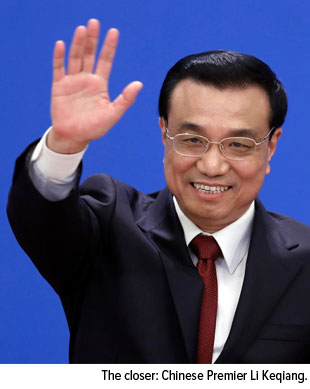 We’re currently seeing the boom of this Chinese railway Renaissance.
We’re currently seeing the boom of this Chinese railway Renaissance.
As I told Wall St for Main St a couple of days ago: “The [Chinese] government is promoting light rail train everywhere in the world, and it’s only accelerating.”
China Courting Buyers
In recent months, Chinese Premier Li Keqiang has emerged as the nation’s top salesman for what he calls the “New Silk Road”—miles upon miles of high-speed transportation connecting all corners of the world. His plan might very well become one of China’s most lucrative exports and culturally significant contributions to the world: fast, efficient and reliable railways.
Which many areas of the world sorely need.
In numerous countries, including here in the U.S., rail systems are outmoded and deteriorating. Five years ago, the U.S. Department of Transportation’s Federal Transit Administration concluded that “more than one-third of [rail] agencies’ assets are either in marginal or poor condition, indicating that these assets are near or have already exceeded their expected useful life.” A whopping 92 percent of railroad ties in the U.S. are still made of wood and, in many cases, fall within a range of 15 to even 100 years old. A few lines, such as the one that connects Los Angeles and Las Vegas, no longer receive regular service.
In India, where thousands of citizens rely on mass transportation, railroads have been combating a years-long rash of onboard fires relating to aging equipment and poor electrical maintenance. Last month, the state-owned India Railways chalked out plans with China to improve its lines and begin construction on a $33 billion, 1,090-mile high-speed rail connecting Delhi and the southern coastal city of Chennai.
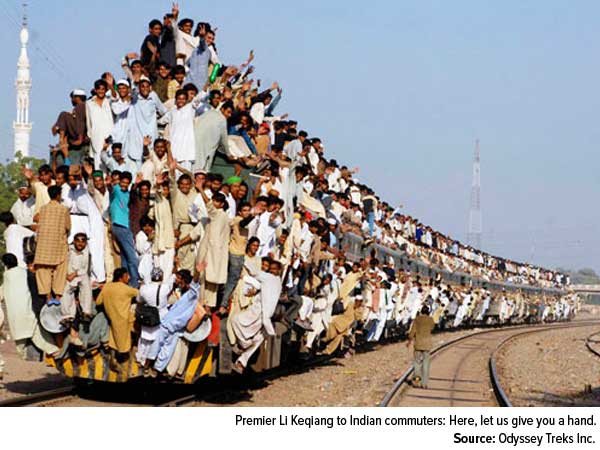
In November, China Railway Construction Corp. (CRCC), which we own in our China Region Fund (USCOX), signed a contract with Nigeria to construct a $12 billion, 870-mile rail system from Lagos, the nation’s second-most populous city, to the seaport town of Calabar. In an effort to shed China’s reputation for using only Chinese workers in foreign projects, CRCC Chairman Meng Fengchao “pledged to hire at least several thousand workers from Nigeria,” according to Bloomberg Businessweek.
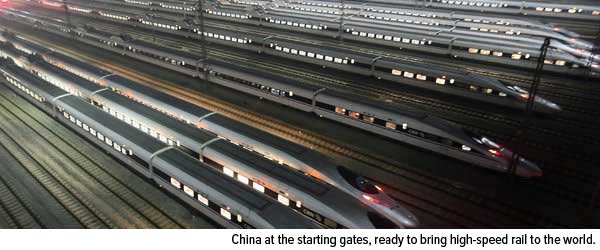
But China’s most ambitious plan to date comes in the form of a proposed $230 billion high-speed rail system linking Beijing and Moscow, which will largely replace the storied 100-year-old Trans-Siberian Railway. Whereas the Trans-Siberian takes about six days one-way, the new high-speed line will cut travel time down to only two days. The estimated distance is 4,350 miles, “more than three times the world’s current longest high-speed line, from the Chinese capital to the southern city of Guangzhou,” according to Business Insider.
Following the announcement, the market handsomely rewarded CRCC. Since the end of October, its stock has gained 16 percent, beating for the first time this year the Hang Seng Composite Index, the benchmark for USCOX.
Just as significant as the proposed line itself is what it symbolizes: a strengthening relationship between Beijing and Moscow. Already Russia has signed a multibillion-dollar gas and oil export deal with its southern neighbor, a clear snub at the European market.
In any case, China’s goal is to do for other countries what it has done for its own. In only ten years’ time, China has amassed an impressive network of rails that helps citizens from all corners of the nation—from the rural to urban—stay connected. Modern rail makes the nation more energy- and time-efficient, and concentrates real estate development.
Unfathomable Amounts of Resources Will Be Needed
As impressive as the Beijing-Moscow project is, it only begins to touch on the large host of jobs China has lined up, which will require untold amounts of raw materials.
In the map below, each shaded country denotes the location of current or pending Chinese projects, with many more possibly to come. UBS reports that 64 new projects have been signed in 2014 alone, with the months of October and November seeing a huge spike in approvals.
A few highlights are worth mentioning. Last March, CNR Dalian Locomotive and Rolling Stock Company signed a $17.6 million contract with Ethiopia to provide 41 modern tramcars. Around the same time, South Africa ordered 232 diesel locomotives from CNR, a job worth $930 million. In July, China, Peru and Brazil agreed to cooperate on the construction of a railway that would connect the Peruvian Pacific coast to the Brazilian Atlantic coast. And in October, the Massachusetts Department of Transportation awarded a $567 million contract to CNR to build 284 train cars for Boston’s subway system.
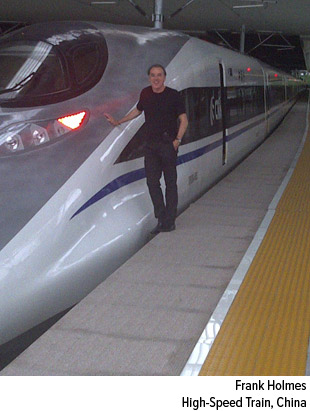 These projects will require astronomical amounts of resources and raw materials, including heavy-duty steel, carbon fiber, aircraft-grade aluminum, copper and concrete—all of which should bode well for our Global Resources Fund (PSPFX).
These projects will require astronomical amounts of resources and raw materials, including heavy-duty steel, carbon fiber, aircraft-grade aluminum, copper and concrete—all of which should bode well for our Global Resources Fund (PSPFX).
As for concrete, would it surprise you to learn that China has used more of it in the last three years than the U.S. used during the entire 20th century? “Where there’s cement consumption, there’s growth,” reports Business Insider, “and there’s never been anything like what’s happening in China.”
Missing in action in the map above is California, but perhaps not for long. Next year, the California High Speed Railroad Authority will begin accepting bids on what will eventually be the U.S.’s first high-speed rail system. Right now a bidding war for the estimated $566 million contract is brewing between China’s CSR Corporation Limited and China CNR Corporation.
Also missing is Mexico. Early last month, CSR won the bid to manufacture train cars while CRCC arranged to build the Latin American country’s first-ever high-speed railroad. Costing $4.3 billion, the line would have spanned 130 miles, from Mexico City to Queretaro. But just days after the contract was signed, Mexico canceled the deal “amid new reports that one of the bid partners built a home for [Mexican] first lady Angelica Rivera,” according to Bloomberg. CRCC has since threatened legal action.
Still, there are numerous investment opportunities in Premier Li’s “New Silk Road” initiative, as you can see below.
And the opportunities don’t stop there. Along with a greater number of domestic Chinese rail lines comes an explosion in service industries catering to weary travelers, including restaurants, hotels, car rentals, discretionary goods, property and more.
Many of these companies, in fact, hail from the U.S. Fast food restaurants such as McDonald’s, KFC, Pizza Hut and Starbucks—which we own in both our All American Equity Fund (GBTFX) and Holmes Macro Trends Fund (MEGAX)—have lately taken aggressive positions in and around China’s growing number of depots.
American hotels have also seized on the opportunity to service Chinese travelers making overnight stays along the way, with massive growth down the road.
In a recent Barron’s piece, emerging markets analyst Shuli Ren highlighted the attractiveness of investing in China rail stocks, especially in light of the People’s Bank of China’s (PBoC’s) recent interest rate cut, which will help railroad companies deleverage:
While China Railway Construction Corp. [which we own in USCOX] and China Railway Group both are major winners, given their 40 to 45 percent market share each in railway construction in China, CRCC currently has only a small exposure overseas, which means more upside. About 25 percent of CRCC’s new contracts come from overseas markets, the highest among its peers. CRCC is also less indebted, with “only” 94 percent net gearing.
Chinese banks’ recent decision to lower financing costs and increase lending has helped railroad companies, both state-owned and listed, gain a market advantage throughout the world.
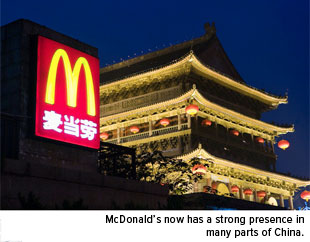 BCA Research has additionally cited the PBoC’s rate cuts and the Chinese leadership’s efforts to lower the cost of borrowing as further enticing reasons to consider Chinese rail: “interest rate sensitive sectors such as… ‘asset-heavy’ industries such as materials, industrials and energy” all benefit. As these industries are directly and indirectly related to the construction and maintenance of railroads, they are also clear beneficiaries.
BCA Research has additionally cited the PBoC’s rate cuts and the Chinese leadership’s efforts to lower the cost of borrowing as further enticing reasons to consider Chinese rail: “interest rate sensitive sectors such as… ‘asset-heavy’ industries such as materials, industrials and energy” all benefit. As these industries are directly and indirectly related to the construction and maintenance of railroads, they are also clear beneficiaries.
Expressing positivity in “Chinese growth, especially on stocks, going into the New Year,” BCA encourages readers “to be invested in Chinese shares and overweight Chinese equities in managed global and EM [emerging market] portfolios.”
One such EM portfolio that investors can take advantage of to catch opportunity is our very own China Region Fund (USCOX).
On Our A-Game
One final note I want to leave you with is the strong performance of Chinese A-shares lately. Even though they tend to be volatile, they’ve been climbing pretty steeply since the summer.
The financial sector has been the clear winner, which USCOX maintains significant exposure to. And as I’ve previously said, materials, utilities and industrials all have residual benefits to the railway industry.
As I told CNBC Asia’s Squawk Box regarding China A-shares:
I think people finally woke up to the breakout that took place in the summer. You saw that reversal, those long-term moving averages and it was defying all the negativity. We went long A-shares starting in September and being overweighted in our China opportunity fund.
Please consider carefully a fund’s investment objectives, risks, charges and expenses. For this and other important information, obtain a fund prospectus by visiting www.usfunds.com or by calling 1-800-US-FUNDS (1-800-873-8637). Read it carefully before investing. Distributed by U.S. Global Brokerage, Inc.
Past performance does not guarantee future results.
Foreign and emerging market investing involves special risks such as currency fluctuation and less public disclosure, as well as economic and political risk. By investing in a specific geographic region, a regional fund’s returns and share price may be more volatile than those of a less concentrated portfolio.
Because the Global Resources Fund concentrates its investments in specific industries, the fund may be subject to greater risks and fluctuations than a portfolio representing a broader range of industries.
Stock markets can be volatile and share prices can fluctuate in response to sector-related and other risks as described in the fund prospectus.
The Hang Seng Composite Index is a market-cap weighted index that covers about 95% of the total market capitalization of companies listed on the Main Board of the Hong Kong Stock Exchange.
The Shanghai Composite Index (SSE) is an index of all stocks that trade on the Shanghai Stock Exchange.
The Shanghai A-Share Stock Price Index is a capitalization-weighted index. The index tracks the daily price performance of all A-shares listed on the Shanghai Stock Exchange that are restricted to local investors and qualified institutional foreign investors. The index was developed with a base value of 100 on December 19, 1990.
Fund portfolios are actively managed, and holdings may change daily. Holdings are reported as of the most recent quarter-end. Holdings in the funds mentioned as a percentage of net assets as of 9/30/2014: Accor 0.00%, China CNR Corporation 0.00%, China Railway Construction Corp. in China Region Fund 1.05%, CNR Dalian Locomotive and Rolling Stock Company 0.00%, CSR Corp. Ltd. 0.00%, China Railway Group 0.00%, Hilton Worldwide 0.00% Hyatt Hotels Corp. 0.00%, InterContinental Hotels Group 0.00%, Marriott International Inc. 0.00%, McDonald’s 0.00%, Shangri-La Asia 0.00%, Starbucks Corp. 0.00%, Starwood Hotels and Resorts Worldwide 0.00%, Wyndham Worldwide Corp. 0.00%.
All opinions expressed and data provided are subject to change without notice. Some of these opinions may not be appropriate to every investor. By clicking the link(s) above, you will be directed to a third-party website(s). U.S. Global Investors does not endorse all information supplied by this/these website(s) and is not responsible for its/their content.
